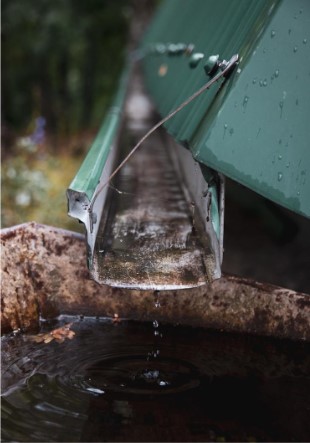Cleaning your gutters is the most important home maintenance task. Cleaned gutters keep your home protected against water damage, mold growth, and foundation erosion. Leaves, dirt, and debris pile up inside the gutter channel and block the flow of rainwater to pass through the system safely. It damages your roof, siding, and landscaping. Therefore, you should learn about cleaning the gutters effectively to save your money and the health of your home.
Here, we will explore some useful ways to clean the gutters.
1. Schedule Regular Maintenance of Gutters
Regular cleaning and maintenance of gutters helps to protect your home from water damage. You should clean the gutters, especially in spring and fall. This is because gutters are usually clogged during these seasons due to fallen leaves and dead branches. While cleaning, you should check for holes, loose brackets, and cracks. Catching these issues earlier makes repairs easier and prevents costly expenses. Another benefit of regular cleaning of gutters is their job efficiency, channeling rainwater away from sensitive areas of your home.
2. Call Professional Guttering Services for Help
If you want to ensure that your gutters are clean and functioning properly, you can call professional guttering services. For multistory homes or properties with complex roof designs, it is a risky and physically demanding task to attempt the cleaning of gutters on your own. Expert guttering services have the experience and equipment to handle cleaning efficiently. They save your time and guarantee a more thorough job than typical DIY cleaning.
3. Use Appropriate Tools
Using the right equipment while cleaning gutters makes the task easy, less time-consuming, and safe. With appropriate equipment, you can not only enhance safety but also improve efficiency and protect your home from damage. Before starting the cleaning process, you should have a sturdy ladder, a scoop, gloves, a bucket, and a garden hose. These tools make your jobs easier and ensure debris is removed thoroughly.
4. Check the Downspouts and Drains for Clogs
Blockages in the downspouts or drainage lines prevent water from flowing away from your home. You should flush water through the downspouts. For this, attach your garden hose to the top of the downspout, and run water down it with moderate pressure. If you notice that water backs up or flows slowly, there are definitely some obstructions. When clogs are not clear with water alone, you can use a plumber’s snake or a handheld auger. After breaking the blockage, flush the line again with water to make sure that all debris is expelled.
5. Take Proactive Steps to Prevent Future Clogs
If you don’t want to frequently clean out blockages, take proactive steps to prevent future clogs in your gutters. One of the most effective steps is trimming the overhanging tree branches. Doing so will help in reducing the number of leaves that can directly fall into the gutters. Another proactive strategy is installing gutter guards or screens. Gutter guards or screens prohibit leaves and large debris from entering the gutters. Moreover, you can also use downspout strainers or filters to catch leaves and twigs before they enter deeper into the drainage system.

